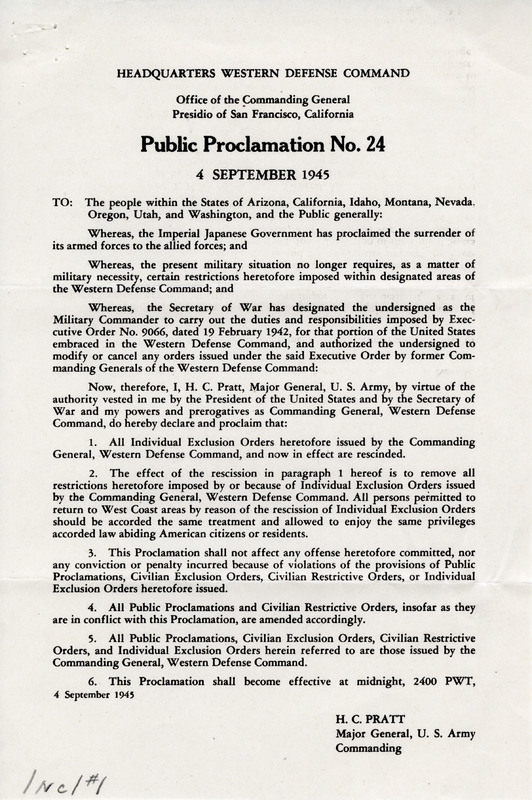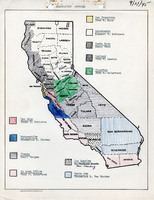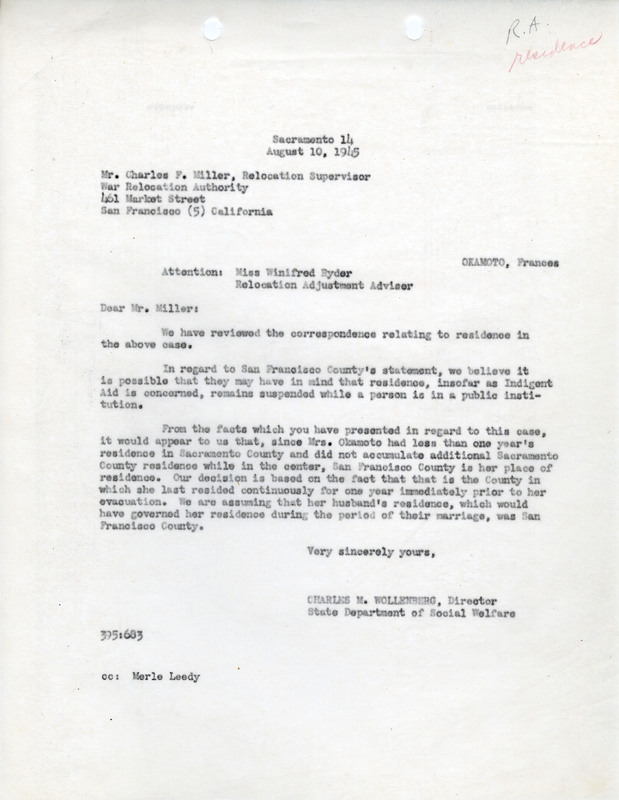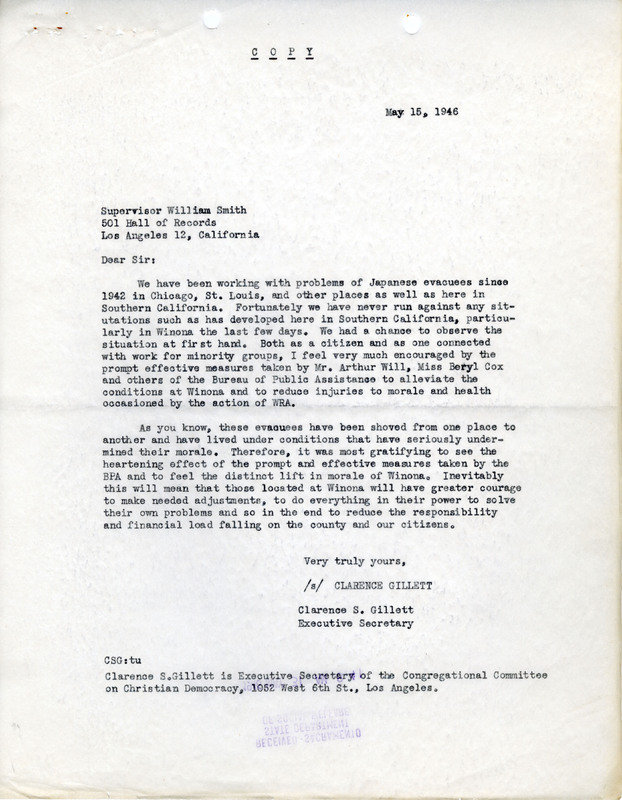RESETTLEMENT
Repeal of Exclusions
Exclusion orders were finally rescinded on November 10th, 1944, more than two years after the original order. Camps were closed in stages to allow for a controlled exodus. However, many of those incarcerated faced many difficulties in returning to their former homes.
Department of War Services and Resettlement
Once people were allowed to leave the camps, the Department of Social Welfare again cooperated to provide financial aid and services to those looking to resettle back into California. Financial aid was provided for housing, food, household goods, and other items that might help those newly released from camps to become self-supporting.
Issues upon Resettlement
Establishment of Residency
Japanese released from camps were required to establish residency in their former counties to receive aid from that county welfare office. The War Services Bureau was again concerned with policies for establishing residency. Usually, establishment of residency required proof that an applicant had resided in the State for three full years, and in a county for one full year. This is exemplified in the case of Frances Okamoto, who established residency in San Francisco County.
Housing Shortage
Because of the sudden influx of people, both from incarceration camps and soldiers returning from the war, there was a shortage of available housing for people looking to relocate back to California. Los Angeles County was particularly inundated with new residents and county welfare officials coordinated with the War Services Bureau in order to provide adequate assistance.
Winona and Lomita Housing Project
To combat the housing shortage, the State set up housing projects that would provide temporary housing for individuals unable to find reasonable accommodations in the county in which they originally resided. Unfortunately, these projects faced the same issues that the incarceration camps did, in that urgency of need resulted in rapid, inferior construction.







